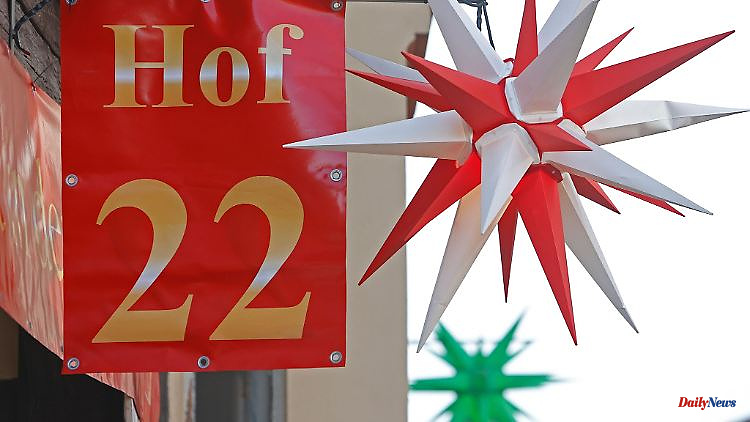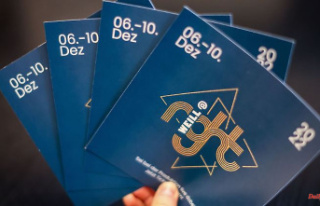Advent and Christmas are traditional festivals associated with customs. Some customs are still alive in Saxony-Anhalt.
Halle (dpa/sa) - Advent and Christmas customs are also alive in Saxony-Anhalt. But tradition is now firmly in the grip of consumer society. "In discounters and shops, the increasingly early range of Christmas goods is noticeable," said Annette Schneider-Reinhardt, the scientific officer for cultural heritage at the Federal Association of Home Care BHU (Bonn). The actual Christmas season begins on Christmas Eve and ends on January 6th.
In Wernigerode there has been a nativity scene trail through the town for several years. "This year, 68 shops are taking part, and the travel center and the city are also taking part in the campaign," said city spokeswoman Ariane Hofmann. "The nativity scenes are displayed in the shop windows of the respective shops. Some of them were carved by ourselves." A baker even made his crib out of gingerbread.
The tradition of "Advent in the courtyards" has also existed since reunification. These are private places that are only open to visitors in the run-up to Christmas. "In Quedlinburg, eleven courtyards open on the weekends from the first to the third Sunday in Advent. There are stands with handicrafts and culinary offerings," said Nico Reischke from Quedlinburger Tourismus GmbH. "The aim is to convey the feeling that the whole city is one big Christmas market."
In Gernrode, Advent is held in the Stiftshof, at the Stiftskirche. In the Harz town of Bad Suderode there is the pit lights market. On December 10, clubs and marching bands parade through the town to the market, commemorating the mining tradition.
The "Children's Mining Parade" in Eisleben begins on December 15 at 4:45 p.m. in front of St. Anne's Church. "The older miners hold their prayers in the church, the so-called Mettenschicht. The children, some of them in small miner's uniforms and with pit lights, run to the market together with the miners and smelters," said Daniela Messerschmidt from the Office for Public, Culture and Town Twinning ice life. "Some of the children got their pit lights from their grandfather or great-grandfather or friends, and some also got tools like mallets and hammers," said Messerschmidt.
A special feature, also in the name, is the Heele-Christ market in Bernburg (24.11. to 21.12.2022). The name results from Luther's efforts to postpone the Christmas gifts on December 6th to December 24th, the day of Christ's birth, which was also successful in the course of the Reformation.
In the former Kölbigk near Ilberstedt, a small town where there was also a monastery in the High Middle Ages, legend has it that a miracle of dance took place about 1000 years ago. It is about a group of people who dance in the churchyard on Christmas Eve, are cursed by the pastor named Ruprecht because of it, cannot stop dancing for a year, and are finally redeemed by a bishop.
"We here in Ilberstedt organized our anniversary year "1000 years of Kölbigker Tanzwunder" with numerous activities," said the chairman of the Ilberstedt local history association, Roland Halang. "A theater and dance education project will be performed for the first time next year."
There is also a new Knecht Ruprecht bronze figure. In addition to two artist copies, the first edition now includes 5 pieces with a limited and signed total edition of a maximum of 20 pieces, price per piece 2300 euros. "With this Knecht Ruprecht bronze figure, we want to motivate well-known institutions and sponsors of the Knecht Ruprecht legend to purchase such a bronze figure and present it in their facility," said Halang.












